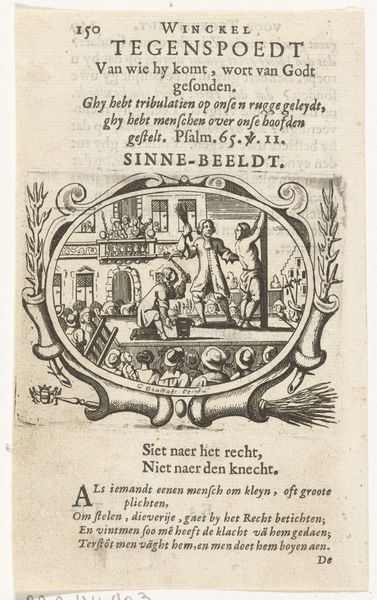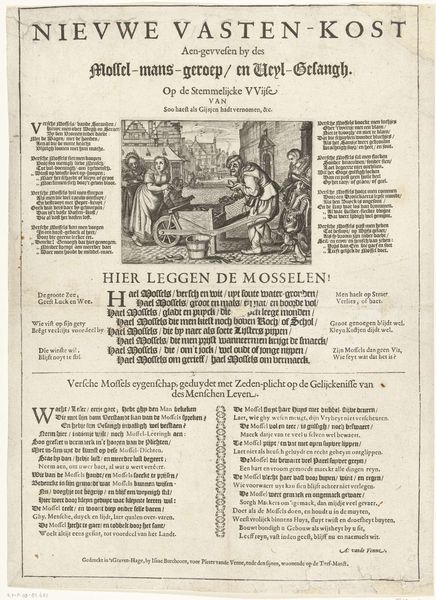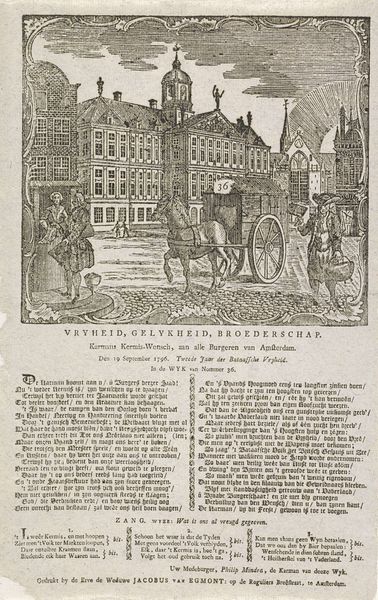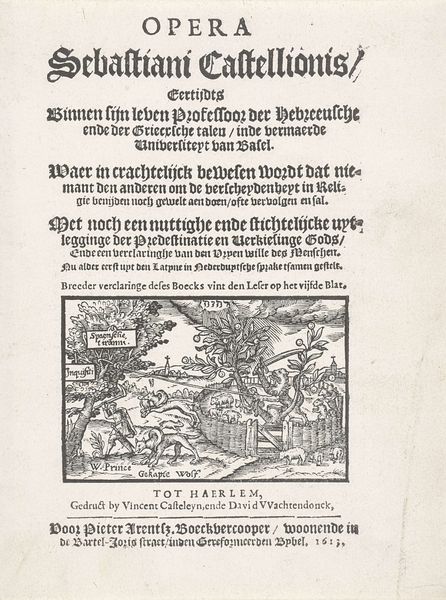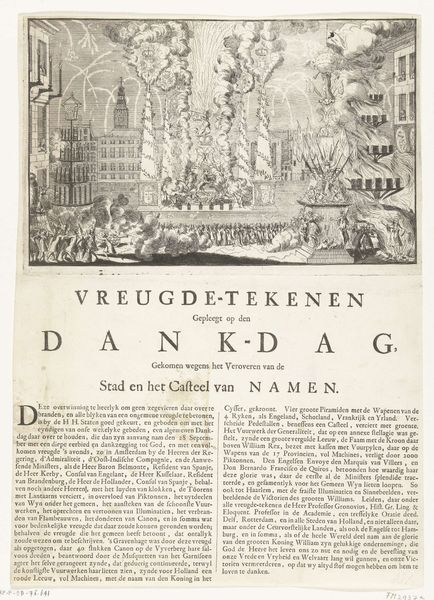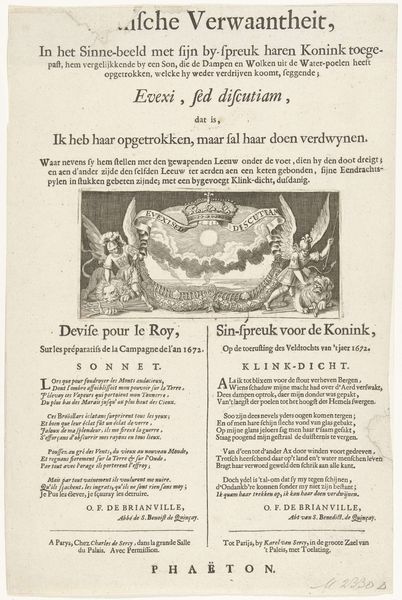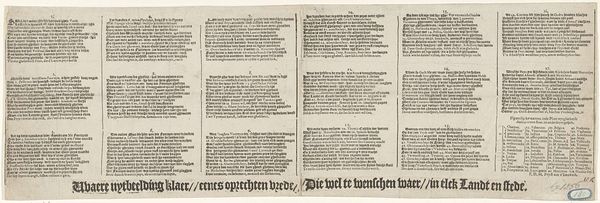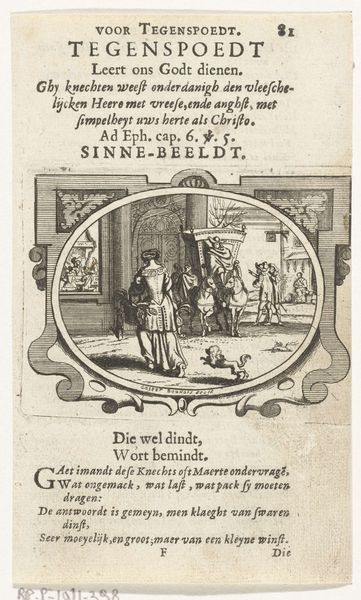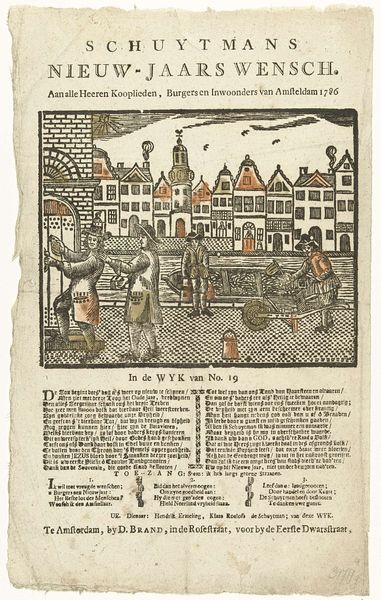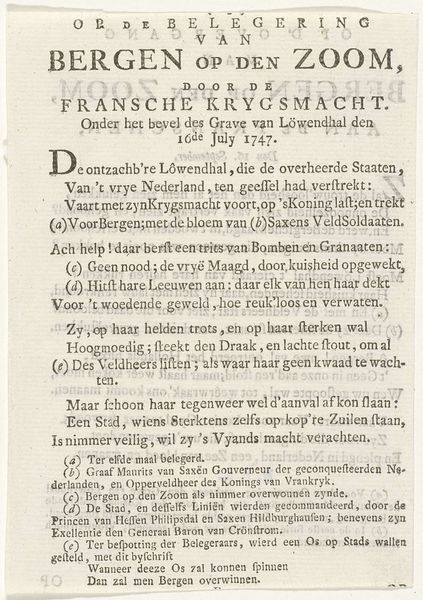
print, engraving
#
dutch-golden-age
# print
#
old engraving style
#
text
#
history-painting
#
engraving
Dimensions: height 180 mm, width 298 mm
Copyright: Rijks Museum: Open Domain
Editor: Here we have "Lament of Rutgert Vlieck, executed on May 13, 1673," an engraving by an anonymous artist. It has a stark and unsettling feel, doesn't it? I’m particularly struck by the architectural detail above the execution scene. How do you interpret this work? Curator: This piece is a powerful intersection of spectacle, justice, and social commentary in 17th-century Amsterdam. It invites us to consider the power dynamics at play, the role of public executions, and the symbolism of placing the event in front of the city hall. Editor: So, the placement is key? Curator: Absolutely. It wasn’t merely a backdrop, but a statement. This was a demonstration of civic authority, but also an acknowledgment of the impact Rutgert Vlieck's crime had on the community. Who was Vlieck to the community, and why was such a strong message needed? Editor: It feels like a warning, almost… Curator: Precisely! The "Klaaglied," or lament, functions as propaganda to instill both fear and a sense of justice served. Also notice how print as a medium makes this reproducible and accessible to a broader audience. Editor: I hadn't thought about its dissemination that way! And looking at the text…it's a poem! That adds another layer. Was the poem widely read? Curator: Undoubtedly! The fusion of image and text heightened its emotional impact, driving the narrative further into the public consciousness. It also provides insight to consider ideas around guilt, repentance, and ultimately, the fragility of social order in that era. What does this mean today? Editor: This gives a glimpse of the complicated intertwining of authority, transgression, and public sentiment during that period, and highlights issues of power structures still existing in current society. It encourages deeper questioning about our systems of justice, and its influence. Curator: I agree completely, an exercise in connecting across history, allowing for reflection on societal priorities.
Comments
No comments
Be the first to comment and join the conversation on the ultimate creative platform.
